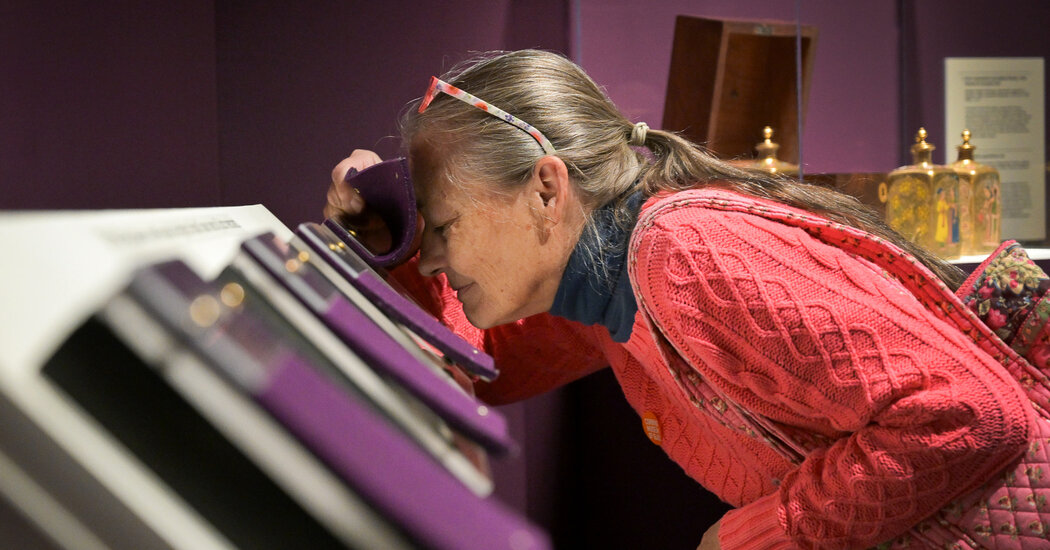Museums are adding scents as another tool for communicating information about science and other subjects in their exhibits.
Does dark matter smell like pepper? Just how stinky was the breath of Tyrannosaurus rex? What was the fragrance of an extinct flower? And what scents might greet us on the moon or Mars?
As museums break with static displays of the past by embracing interactive audio and visual and tactile displays, some have added scent to the sensory onslaught. The human sense of smell, which has powerful connections to memory and emotion, has been deployed in art and historical displays and museums around the world. A recent exhibit highlights the use of scent for science communication by enlivening subjects that might otherwise seem heady and abstract.
The Corning Museum of Glass’s “Sensorium: Stories of Glass and Fragrance” lets visitors experience some displays through the nose as much as the eyes.
Smell is “something that museums can use in a very intentional way to paint a picture that is a little bit more visceral and immediate,” said Julie Bellemare, curator of early modern glass at the museum, which is in Corning, N.Y.
“Sensorium,” running through Feb. 1, 2025, includes about 70 objects that embody the role of glass as a vessel for concocting and containing fragrances. The exhibit traces the use of glass in antiquity and chronicles scientific advances along the way, including the invention of alembics used for distillation.
Before visitors peruse the exhibition’s ancient perfume bottles and gilded atomizers, they are greeted at the entrance by a smelling station. People can lift flaps to sniff four scents — cinnamon, nutmeg, cloves and mace — that correspond to spiced oils that were held in ornate flasks used in the 1700s as diplomatic gifts by Dutch merchants.
